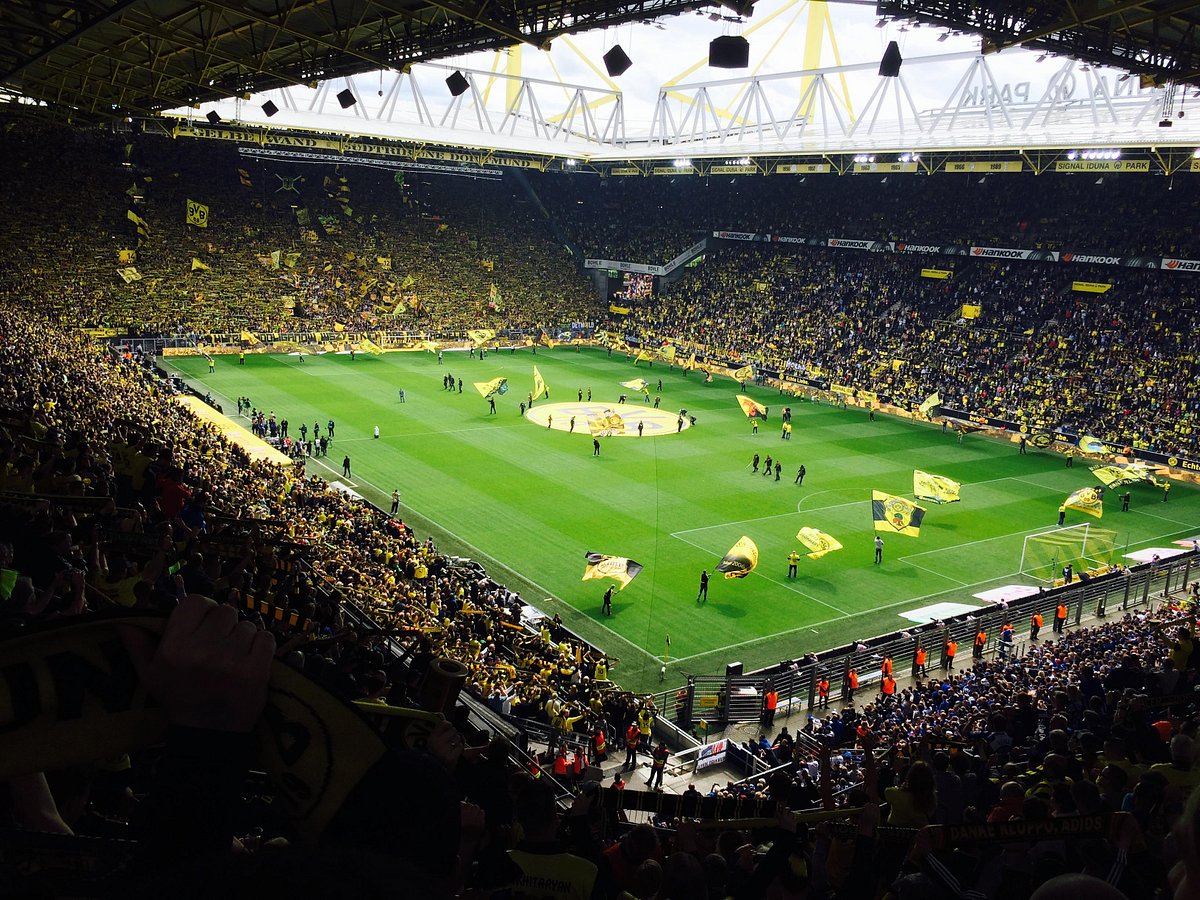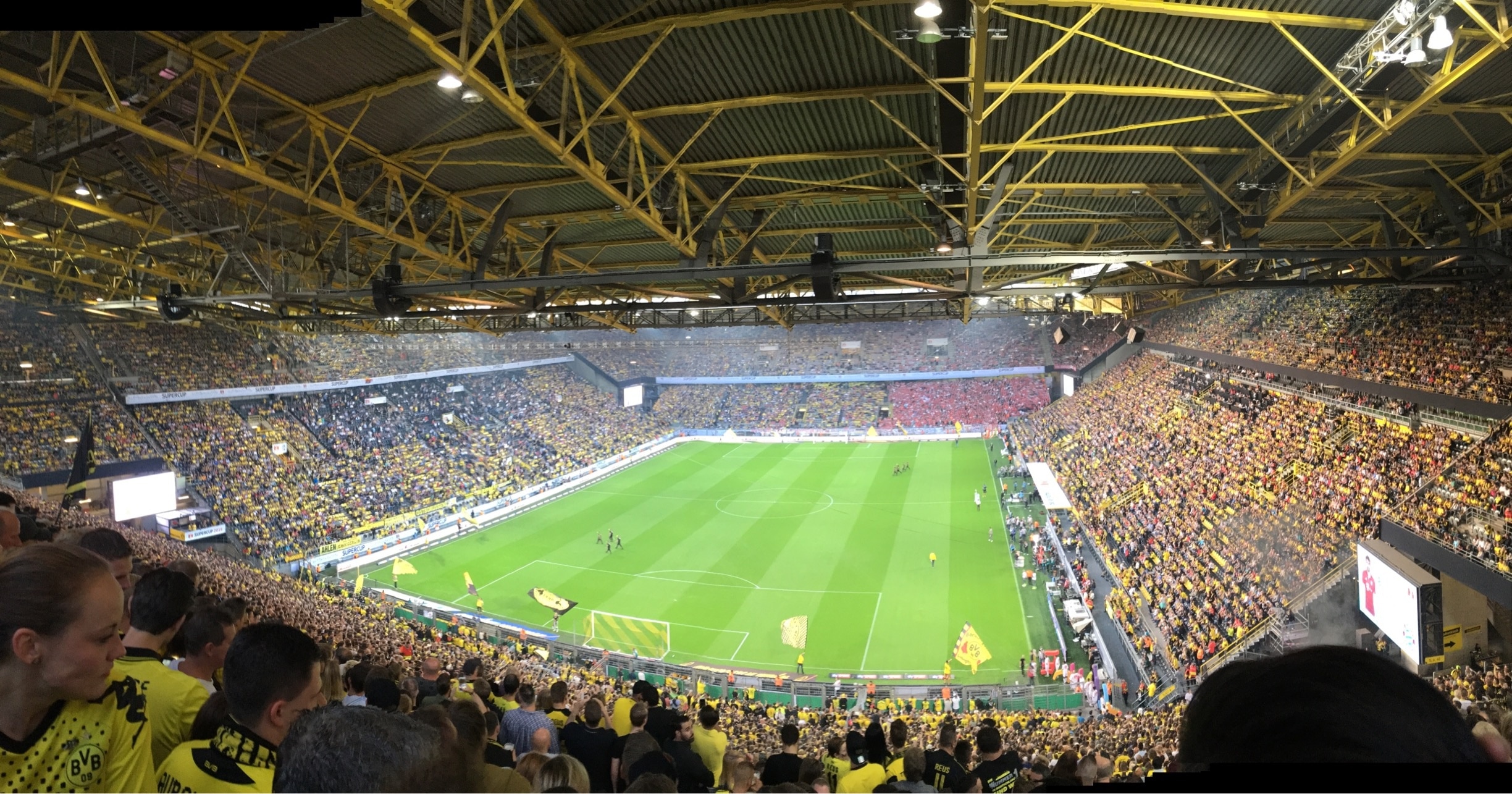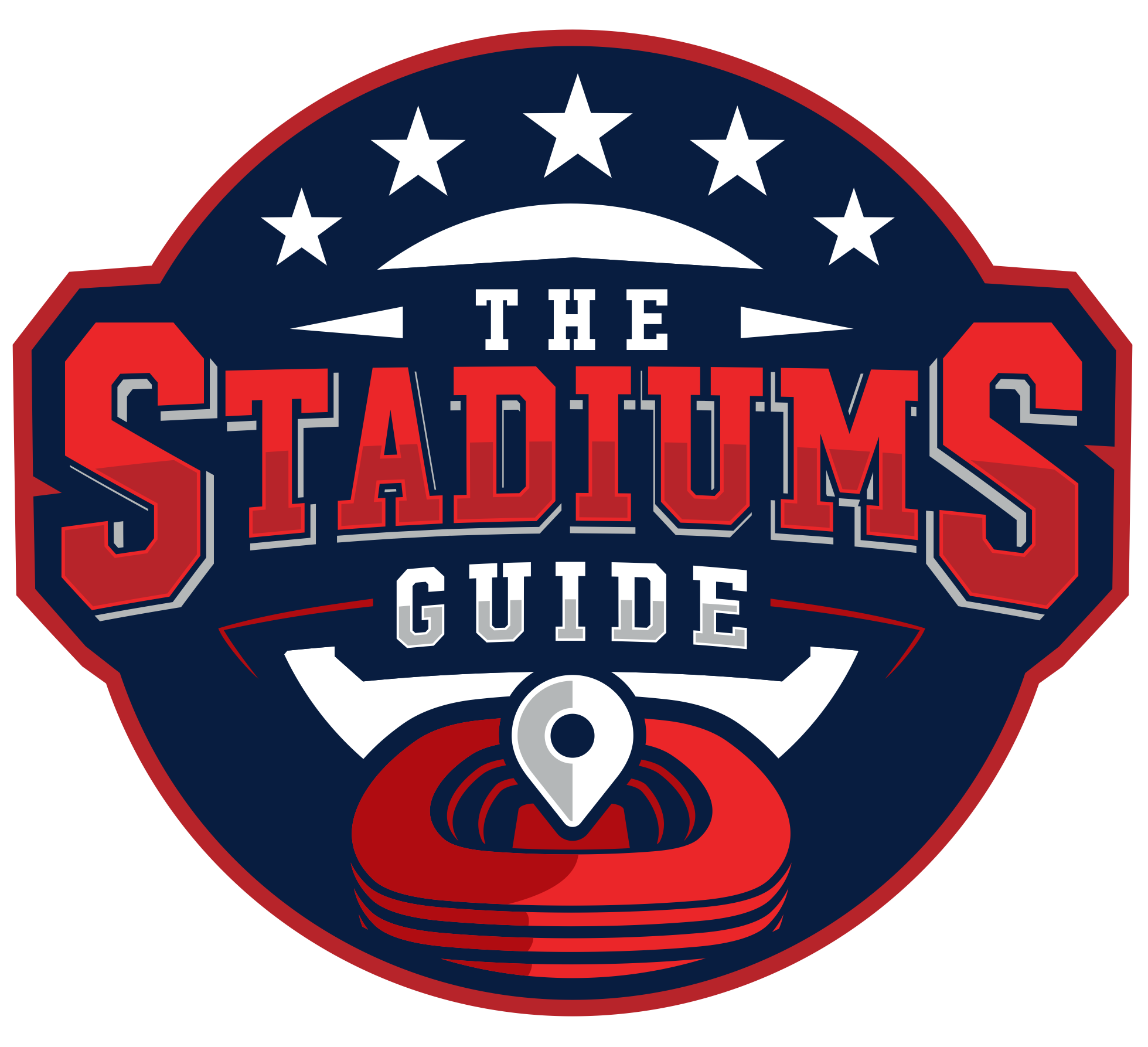Signal Iduna Park, located in Dortmund, North Rhine-Westphalia, Germany, is the renowned home of the esteemed football club, Borussia Dortmund. Officially named Signal Iduna Park due to sponsorship reasons, and referred to as BVB Stadion Dortmund in UEFA competitions, the stadium carries a rich history dating back to its opening on April 2, 1974. Boasting an impressive capacity of 81,365 seats, it remains one of the most iconic football venues in the world, with the highest average attendance of any stadium across the globe.
The proximity of the stadium to the Westfalenhallen, a major event complex, adds to its appeal and allure. As visitors step foot into Signal Iduna Park, they are greeted by the legendary “Yellow Wall,” a massive and passionate fan base that embodies the spirit of Borussia Dortmund. In addition to the exhilarating atmosphere, the stadium also houses the Borussia Dortmund Museum, where fans can immerse themselves in the rich heritage of the club.
Throughout the years, Signal Iduna Park has witnessed many thrilling matches and showcased the exceptional talent of Borussia Dortmund’s players. From its captivating architecture to the unwavering support from the Yellow Wall, the stadium stands as a testament to both the city of Dortmund and the footballing world at large, symbolizing the undying passion for the beautiful game.
History of Signal Iduna Park

In the early 1960s, the need for a larger stadium for Borussia Dortmund became apparent. The initial discussions began in 1961, when the sports committee considered expanding the existing “Rote Erde Stadium”. However, it took several years for the plans to come to fruition.
On 2 April 1974, Borussia Dortmund officially moved into their new home, which was called the Westfalenstadion at the time. This impressive stadium provided 54,000 predominantly standing spaces for fans. Despite being relegated in 1972, Borussia Dortmund managed to host the 1974 World Cup games in their brand new location.
As the years passed, the stadium underwent several transformations and expansions. Today, Signal Iduna Park, as it is now known, holds a capacity of exactly 81,365 spectators, making it Germany’s largest football stadium. The unique structure and energetic atmosphere have created a legendary reputation for this iconic arena.
While the enormous investment in the stadium almost put Borussia Dortmund in financial peril, the situation was luckily resolved by the end of May 2006. Since then, Signal Iduna Park has continued to be the formidable home ground for Borussia Dortmund, with its famous “Yellow Wall” standing as one of the most intimidating and awe-inspiring sights in world football.
Home to Borussia Dortmund

Signal Iduna Park, also known as Westfalenstadion, is the iconic home of Borussia Dortmund, a top-tier football club in Germany. Situated in Dortmund, North Rhine-Westphalia, this monumental stadium has been the heart and soul of Borussia Dortmund since its opening on April 2, 1974. With a seating capacity of 81,365, Signal Iduna Park is known for having one of the highest average attendances in the world.
The stadium has undergone several renovations and expansions over the years, maintaining its status as a modern, state-of-the-art venue. It is widely recognized for housing the famous ‘Yellow Wall,’ a massive section dedicated to Borussia Dortmund’s most passionate fans. Clad in their black and yellow attire, these supporters are known to create an electrifying atmosphere during matches, making Signal Iduna Park one of the most intimidating venues for visiting teams.
In addition to hosting Borussia Dortmund’s home games, Signal Iduna Park has served as a prominent stage for various international football events. It has been a host venue for the 2006 FIFA World Cup, UEFA European Championships, and numerous UEFA Champions League fixtures. The stadium’s top-notch facilities, coupled with its passionate fan base, consistently rank it as one of the best football stadiums globally.
Aside from football matches, Signal Iduna Park also hosts concerts, conferences, and other events, further establishing its importance in Dortmund and the broader North Rhine-Westphalia region. With its rich history, memorable moments, and awe-inspiring atmosphere, Signal Iduna Park stands as a symbol of pride and unity for Borussia Dortmund and its supporters.
Stadium Structure and Seating Capacity

Signal Iduna Park, also known as Westfalenstadion, is a remarkable football stadium located in Dortmund, North Rhine-Westphalia, Germany. It serves as the home ground for the popular football club, Borussia Dortmund. The stadium boasts a current seating capacity of 81,359 spectators, including 25,000 standing spaces, which makes it the largest football stadium in Germany and the fifth largest in Europe.
Constructed as a playing venue for the 1974 World Cup, Signal Iduna Park has undergone several modifications and expansions over the years. These enhancements have greatly improved its structure and seating capacity, allowing the stadium to accommodate more fans and provide an excellent matchday experience.
The stadium consists of four main stands situated around the pitch, with the famous Südtribüne being the largest and most prominent. Known as the “Yellow Wall“, this monumental standing terrace can hold up to 25,000 supporters and is considered one of the most iconic sights in European football.
Among its state-of-the-art facilities, Signal Iduna Park features a glass-front exterior, advanced grass heating system, and a modern design that offers excellent sightlines for spectators. In addition to hosting Borussia Dortmund matches, the stadium has also been utilized for international fixtures and other major events, showcasing its versatility and significance as a sporting venue.
To further enhance the matchday experience, Signal Iduna Park provides a variety of amenities for fans, such as food and beverage outlets, fan shops, and guided stadium tours. With its impressive structure, seating capacity, and top-notch facilities, Signal Iduna Park rightfully holds its position as one of Europe’s premier football stadiums.
Notable Matches at Signal Iduna Park

Signal Iduna Park, officially known as Westfalenstadion, is home to Borussia Dortmund and has witnessed a number of memorable matches throughout its history. Here are a few notable examples:
1. Borussia Dortmund vs. Bayern Munich (2013 UEFA Champions League Final)
In an all-German final, it was Borussia Dortmund and Bayern Munich who clashed at Wembley Stadium in 2013. Signal Iduna Park hosted the public screening attended by over 50,000 fans, creating an electrifying atmosphere similar to what would have been experienced in the stadium itself.
2. Borussia Dortmund vs. Juventus (1997 UEFA Champions League Final)
One of the most remarkable moments in Borussia Dortmund’s history as they defeated Juventus 3-1 in the 1997 UEFA Champions League Final. Signal Iduna Park became a fortress for the home fans, with their fierce support making a significant contribution to the team’s victory.
3. Borussia Dortmund vs. Real Madrid (2013 UEFA Champions League Semi-final)
The first leg of the 2013 UEFA Champions League semi-final was a footballing masterclass from Dortmund, as they outclassed Real Madrid in a 4-1 win. Robert Lewandowski scored all four goals in front of an ecstatic home crowd at Signal Iduna Park.
4. Borussia Dortmund vs. Schalke 04 (2015 Revierderby)
The Revierderby is one of the most anticipated fixtures in German football, and this match did not disappoint. In front of a packed Signal Iduna Park, Dortmund held a 3-1 lead, only for Schalke to fight back and secure a thrilling 3-3 draw.
These are just a few examples of notable matches held at Signal Iduna Park, showcasing the passion, history, and talent associated with Borussia Dortmund and their iconic stadium.
Role in Popular Culture
Signal Iduna Park, the home of Borussia Dortmund, has played a significant role in popular culture over the years. As Germany’s largest football stadium, with a capacity of 81,365, it has become an iconic landmark that has hosted numerous important events, both in football and beyond.
The stadium’s renowned atmosphere, particularly the passionate supporters and the famous Yellow Wall, has attracted the attention of global audiences. This exceptional atmosphere has been featured in various forms of media, such as documentaries, films, and video games. For instance, the EA Sports FIFA series often showcases Signal Iduna Park as a popular venue for virtual matches, adding to the visibility and cultural significance of the stadium in the gaming community.
Moreover, Signal Iduna Park has been utilized for events beyond football, such as concerts and other large gatherings. Its architectural design and modernized facilities make it a versatile and attractive venue for different occasions. As a result, the stadium has become a symbol of Dortmund and its footballing culture, further highlighting the city’s viscerally passionate sports community.
In conclusion, Signal Iduna Park’s prominence in popular culture is a testament to its significance as a celebrated football stadium and versatile event venue. The fervent support of Borussia Dortmund’s fans has placed the stadium at the forefront of football culture, earning it a place in the hearts of sports enthusiasts and the general public alike.
Location and Accessibility

Signal Iduna Park, also known as Westfalenstadion, is the home stadium of Borussia Dortmund. It is situated in Dortmund, North Rhine-Westphalia, Germany, and is located near the Westfalenhallen conference center in the south side of the city. The stadium is less than two miles from Dortmund’s city center and the main train station.
To reach Signal Iduna Park by car, there are multiple routes depending on the direction you are coming from:
- From the north: Take the A1 to junction Dortmund-Unna, then the A44/B1 towards Dortmund.
- From the east: Take the A2 to junction Dortmund-Nordost, then the B236 towards Schwerte, and finally the B1 towards Dortmund.
- From the south: Take the A45 to junction Dortmund-Süd, then the B54 towards Dortmund.
- From the west: Take the A40/B1 towards Dortmund.
For those using public transportation, the stadium is easily accessible by train, subway, and bus.
Signal Iduna Park is not only famous for being the home of Borussia Dortmund but also for its impressive atmosphere and modern facilities. With a capacity of over 81,000 spectators, it is one of the largest and most comfortable stadiums in Europe. The away section is located within the central column of the Nord Tribune, unlike many other stadiums where away fans are confined to corners.
In conclusion, Signal Iduna Park is easily accessible by various means of transportation, making it an ideal location for both home and away supporters to enjoy a memorable matchday experience.
Tours and Visitor Experience
Signal Iduna Park, the home of Borussia Dortmund, offers a range of tours and experiences for fans and visitors alike. One popular tour option is the self-guided tour which starts at the Foyer West. An instructor will explain how the tour works before sending visitors off to explore the stadium’s western tribune. For an interactive and engaging experience, visitors can join City Tour Dortmund in a double-decker bus, which includes an audio guide providing information about the stadium and its surroundings, starting at $20.15 per adult.
Another exciting tour option is the Malocher-Tour Dortmund, a Segway tour offering a unique way to experience Signal Iduna Park and nearby attractions, with prices starting at $83.96 per adult. During the stadium tour, visitors also have the rare opportunity to visit the on-site prison area, which is typically only accessible at the Stade de France in Paris.
In addition to tours, Signal Iduna Park provides a stadium experience for children, where they can meet EMMA, the official mascot of Borussia Dortmund and chairwoman of the BVB KidsClub. Hosting events at Signal Iduna Park is made possible by the BVB Event & Catering Team, ensuring a memorable experience for guests in the heart of Europe.
Remember to keep the following in mind while visiting the stadium:
- Booking tickets for tours in advance is recommended
- Wear comfortable clothing and footwear as a considerable amount of walking is involved
- Adhere to stadium rules and follow guide instructions for a safe and enjoyable experience
Future Developments

The future of Signal Iduna Park, home to Borussia Dortmund, looks promising as the club continues to thrive both on and off the pitch. With an impressive capacity of 81,365 spectators, Signal Iduna Park remains Germany’s largest football stadium, and the club has strong ties with its main sponsor, insurance and financial services provider SIGNAL IDUNA, whose partnership has extended until 2031.
Some plans for the future of Signal Iduna Park include modernizing facilities and improving fan experience. As the stadium is renowned for its incredible atmosphere, generated in part by the iconic “Yellow Wall” – a stand with a capacity of 25,000 standing fans – efforts will be made to ensure that this unique feature is preserved and enhanced in the coming years.
Additionally, Borussia Dortmund has shown commitment to sustainability and reducing the environmental impact of the stadium and its operations. This includes introducing more energy-efficient technologies and waste reduction initiatives.
In terms of accessibility, the club plans to continue enhancing the stadium experience for fans with disabilities by improving seating options, access routes to the stadium, and other relevant services.
Finally, the club is dedicated to investing in youth development, as evidenced by the success stories of players such as Jude Bellingham, who joined Borussia Dortmund at the age of 17 and has continued to develop his talent at the club. This focus on nurturing talent, combined with the stadium improvements, will ensure a positive future for Signal Iduna Park.
Overall, the future of Signal Iduna Park remains bright as Borussia Dortmund strives to stay at the forefront of football and deliver fantastic experiences to its dedicated fanbase.

